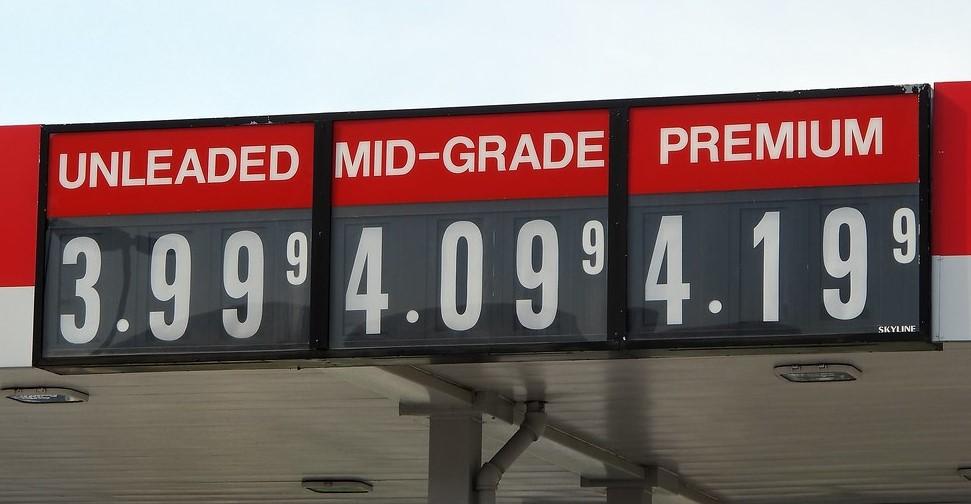The federal government’s Bureau of Labor Statistics (BLS) released new price inflation data today, and according to the report, price inflation during the month decelerated slightly, coming in at the lowest year-over-year increase in eighteen months. According to the BLS, Consumer Price Index (CPI) inflation rose 6.0 percent year over year in February before seasonal adjustment. That’s down from January’s year-over-year increase of 6.4 percent, and February is the twenty-fourth month in a row with inflation above the Fed’s arbitrary 2 percent inflation target. Price inflation has now been above 6 percent for seventeen months in a row.
Meanwhile, month-over-month inflation rose 0.4 percent (seasonally adjusted) from to January to February. That’s down from January’s month-over-month gain of 0.5 percent, which had been a six-month high.
January’s year-over-year growth rate is down from June’s high of 9.1 percent, which was the highest price inflation rate since 1981. But February’s growth rate still keeps price inflation above growth rates seen in any month during the past thirty years. February’s increase was the nineteenth-largest increase in forty years.
The ongoing price increases largely reflect price growth in food, energy, and especially shelter. In other words, the prices of essentials all saw big increases in February.
For example, in February “food at home”—i.e., grocery bills—was up 10.2 percent compared to February of the previous year. Energy services were up 13.3 percent, while new vehicles were up 5.8 percent. The largest decrease, by far, was found in used cars and trucks which fell 13.6 percent over the period. This hardly returned car prices to 2019 levels, however. Used car price growth reached seventy-year highs throughout much of 2021, increasing year over year by over 20 percent or more in every month from April 2021 to April 2022.
As of February, there was no sign of price growth in shelter slowing down. Last month, shelter prices increased by 8.1 percent year over year, which was the highest growth rate since June 1982. Month-over-month growth in shelter costs also remained among the highest we’ve seen since the 1980s.
Meanwhile, February was yet another month of declining real wages, and was the twenty-third month in a row during which growth in average hourly earnings failed to keep up with CPI growth. According to new BLS employment data released last week, nominal wages grew with hourly earnings increasing 4.57 percent year over year in February. But with price inflation at 6 percent, real wages fell.
Inflation Is Not “Falling”
With the year-over-year reading on price inflation down from January, we’re likely to hear that inflation is “falling.” Many will suggest this even though the CPI actually went up from January to February.
It is quite a stretch to say that price inflation is “falling” by any measure, of course, and many who say it is falling really just mean “the rate is increase is getting smaller.” Nonetheless, even if we were to find next month that price inflation had turned negative during March, we would still be a very long way from undoing the price inflation that has occurredover the past two years. Indeed, since February 2021, the consumer price index has increased by 14 percent, and shelter prices have increased by 13 percent. Average earnings over that period, on the other hand, increased by only 10 percent. Even worse, that is an average of earnings, and tells us little about the millions of Americans on fixed incomes who have not been able to take advantage of wage inflation over that period. Many of those living off returns from investments are getting poorer as well. Since February 2021, the Down Jones has increased by only 8 percent.
Even with all the “robust” job growth we are told about by administration and Federal Reserve mouthpieces, it is clear there is already no “soft landing” for Americans who have seen their spending power only fall over the past two years.
Nor is there much reason to believe that rates of increase in price inflation will soon collapse, given recent events in the banking sector. With the failure of Silicon Valley Bank and Signature Bank over the weekend, the Federal Reserve is now under enormous pressure to moderate any plans for any continued quantitative tightening. Before the bank failures, market sentiment had leaned toward an increase of 50 basis points to the next FOMC meeting, scheduled for March 21-22. Now, with many investors and banks fearing a liquidity squeeze, the FOMC will be pressured to ease financial conditions for the sake of the banking sector. Even assuming that Jerome Powell is sincere in his repeated claims that he plans further substantial action to rein in price inflation, the last twenty years have made it clear that the Federal Reserve’s policymakers quickly cave to demands from the Treasury Department that the Fed intervene to lower interest rates in times of financial crises.
[Read More: “Yes, the Latest Bank Bailout Is Really a Bailout, and You Are Paying for It.” by Ryan McMaken]
If this scenario repeats itself, we can expect an end to the Fed’s current tightening cycle, and that will mean today’s elevated rates of inflation will continue well into the foreseeable future. Or, to use the vocabulary of Chairman Powell: the medium-term prospects for price inflation are looking much less “transitory” and much more “entrenched.”
Unfortunately, thanks to more than a decade of extremely loose monetary policy, the US economy has been heavily financialized, and entire sectors from tech to real estate to banking have become heavily reliant on ultra-low interest rates and easy money. Current layoffs in the tech sector, falling home prices, and failing banks have made it clear just how fragile the economy has become.

